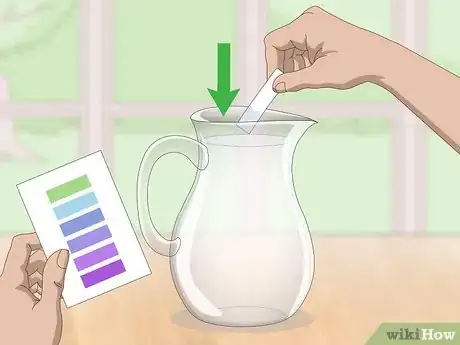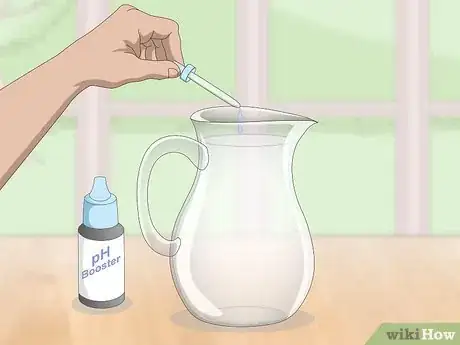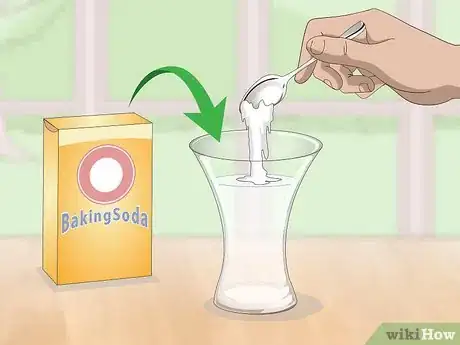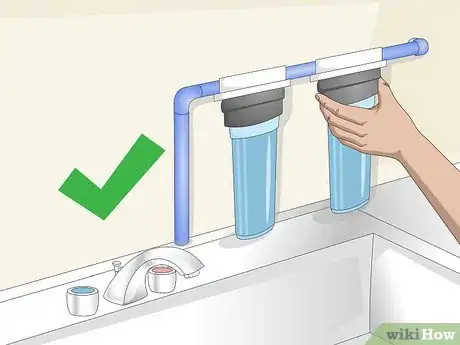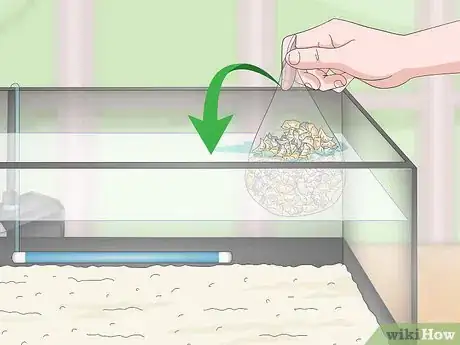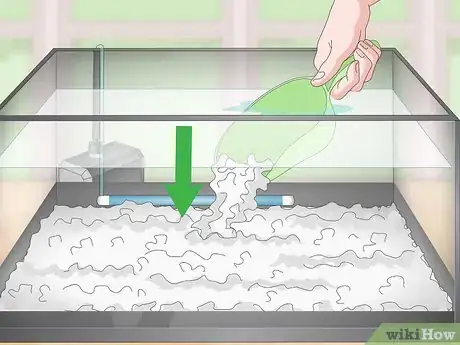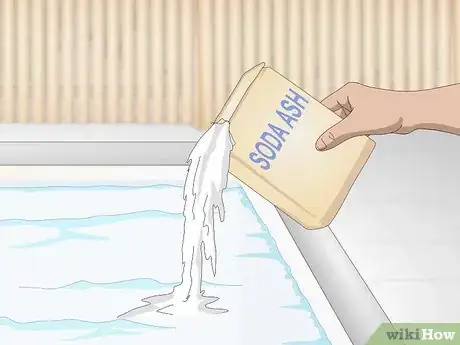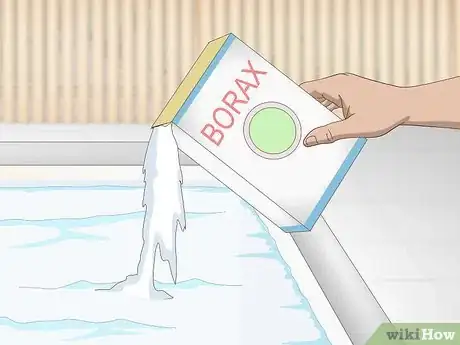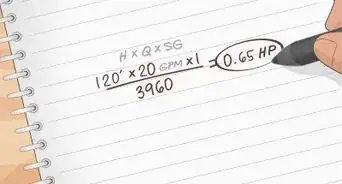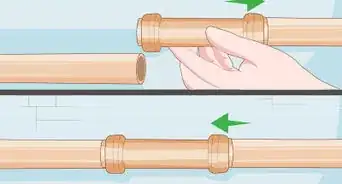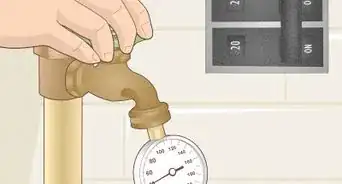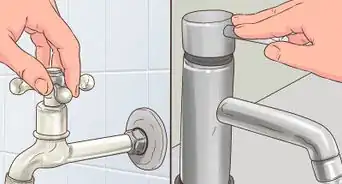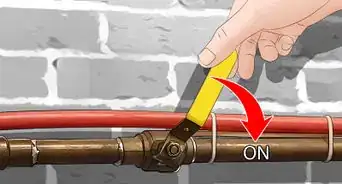This article was co-authored by Chris Hasegawa, PhD and by wikiHow staff writer, Hunter Rising. Dr. Chris Hasegawa was a Science Professor and the Dean at California State University Monterey Bay. Dr. Hasegawa specializes in teaching complex scientific concepts to students. He holds a BS in Biochemistry, a Master’s in Education, and his teaching credential from The University of California, Davis. He earned his PhD in Curriculum and Instruction from The University of Oregon. Before becoming a professor, Dr. Hasegawa conducted biochemical research in Neuropharmacology at the National Institute of Health. He also taught physical and life sciences and served as a teacher and administrator at public schools in California, Oregon, and Arizona.
There are 13 references cited in this article, which can be found at the bottom of the page.
This article has been viewed 71,744 times.
Water typically has a neutral pH around 7, but added minerals and chemicals can cause it to drop into acidic levels. Overly acidic water can change your body’s pH levels when ingested, harm fish in an aquarium, or cause irritation in a swimming pool. By mixing simple additives into your water, you can increase your water’s pH to your liking!
Steps
Increasing pH in Drinking Water
-
1Test the pH of your water with test strips. Dip the end of a paper strip or the pH meter into your water. The pH paper will start to change colors based on the acidity of your water. Match the colors to those provided on the guide to determine the pH of your water.[1]
- pH test strips can be purchased online.
-
2Use prepackaged pH booster drops to adjust single servings of water. Use 2-3 drops per 1 cup (240 ml) of water to increase the pH by 1. Squeeze the drops into your cup of water and mix it together thoroughly before drinking it.
- Packages of pH drops can be bought in health stores or online.
Advertisement -
3Mix baking soda into a serving of water to change the pH and alkalinity. Pour yourself 1 cup (240 ml) of water and pour in 1 tsp (4 g) of baking soda to raise the pH by 1. Stir the solution together thoroughly to bump up your pH levels to make alkaline water.[2]
- Baking soda will make your water slightly salty and will raise your sodium levels.
- Alkalinity measures how well water can neutralize acids.[3]
-
4Install an acid neutralizing filter on your water line for a permanent solution. Neutralizing filters contain calcite or magnesium oxide and connect directly to your water line. As the water passes through the filter, the calcite raises the pH levels of your water. Call a plumber to attach the filter to your water line.
- Neutralizing filters work well for raising the pH of well water.
- Installing a filter can affect the hardness of your water so you may want to install a water softener.
- Filters in the United States cost around $500 USD.
- The calcite or magnesium oxide needs to be replaced every 2-3 years to continue working.
Adjusting pH Levels in an Aquarium
-
1Use a pH meter to accurately measure your aquarium’s pH levels. Dip the end of your pH meter into your aquarium. Keep the meter submerged until the numbers on the screen stabilize. Once you remove the meter from your aquarium, rinse the end of the meter with distilled water to clean it.[4]
- pH meters can be purchased at aquarium stores or online.
-
2Fill a mesh bag with crushed coral for a simple way to increase pH. Use ½ cup (200 g) of crushed coral for every 20 gallons (76 L) in your aquarium to increase the pH. Rinse the coral off in your sink before transferring it into a small mesh bag. Set the bag in your fish tank where there is a current, such as next to a filter. Wait 2-3 days before checking the pH of your aquarium again and add more crushed coral to the bag until you reach the desired pH level.[5]
- Crushed coral can be found in most aquarium stores or online.
-
3Line your tank with limestone chips to control pH and add decoration. Limestone is filled with sediments from carbonate material that naturally increases the pH of seawater. [6] Layer 1 inch (2.5 cm) of limestone on the bottom of your tank and wait 2-3 days before checking the pH again. Keep adding more limestone until you reach your desired pH levels.[7]
- Make sure your aquarium has a filter so the water can move through the limestone and spread the sediment. Otherwise, your aquarium will become concentrated in different areas.
-
4Plant macroalgae in your tank for a hands-off approach at balancing pH. Macroalgae is a type of plant that gets rid of harmful algae and boosts your tank’s pH levels. Buy some macroalgae from your local aquarium store and set it in the bottom of your tank. The macroalgae remove high levels of carbon dioxide from the water to adjust the water’s acidity. [8]
- Macroalgae also acts as a great decoration and food source for your fish.
- Trim macroalgae with a clean pair of scissors if it starts to become overgrown.
Balancing pH in Swimming Pools
-
1Use test strips to measure the pH in your pool. Purchase a container of test strips online or from a pool care store. Dip the test strip into your pool and hold it in the water until the colors change. Compare the colors on the strip to those on the packaging to see the pH levels.[9]
- Many pool test strips also measure chlorine levels and alkalinity.
-
2Add soda ash to your pool for the most effective way to raise pH and alkalinity. Soda ash, or sodium carbonate, is similar to baking soda and can be used when your pool’s pH levels are low. Use 12 ounces (340 g) of soda ash for every 10,000 gallons (38,000 L) in your pool to raise the pH by 0.4. Pour the soda ash directly onto the water’s surface, and let it mix with your pool for 6 hours.[10]
- Soda ash can be found at pool care stores or online.
- Test your pool’s pH levels weekly to see if it needs any adjustments.
- pH measures the acidity of the water while alkalinity is the measurement of water’s ability to resist pH change. Alkalinity also affects how clear or cloudy your pool appears.[11]
Tip: If you need to change the alkalinity after the pH is set, use 16 ounces (450 g) of baking soda for every 10,000 gallons (38,000 L) in your pool to raise the alkalinity by 7.14 ppm.
-
3Use Borax to change the pH without adjusting the alkalinity. Use 20 ounces (570 g) of Borax for every 5,000 gallons (19,000 L) in your pool to raise the pH by 0.5.[12] Once you find the amount you need to change your pH, pour the Borax directly into your filter so it mixes throughout your pool. Check the pH levels the next day to see if you need to make any further adjustments.[13]
- Borax can be purchased at any local drugstore.
-
4Turn on your pool’s jet system to remove carbon dioxide from the water. Leave the jets running for 2-3 days to circulate and aerate the water. The carbon dioxide will be removed from the water and raise the pH without affecting your pool’s alkalinity levels.[14]
- Aerating your pool with jets is the easiest but most time-consuming method.
Warnings
- Keep your water’s pH levels below 8 or else it will become too basic to drink.⧼thumbs_response⧽
- Different fish have different water parameters. Some actually prefer slightly acidic water, so keep your specific fish's needs in mind when adjusting pH. Don't just assume slightly acidic water is harmful.⧼thumbs_response⧽
Things You’ll Need
Increasing pH in Drinking Water
- pH booster drops
- Baking soda
- Neutralizing filter
Adjusting pH Levels in an Aquarium
- Crushed coral
- Mesh bag
- Limestone chips
- Macroalgae
Balancing pH in Swimming Pools
- Soda ash
- Borax
References
- ↑ https://youtu.be/JpQw-_1jLzs?t=11
- ↑ https://youtu.be/waInfP9qj-Y?t=7
- ↑ https://www.thirteen.org/edonline/studentstake/water/schoolwater/alkalinity/alkalinity.htm
- ↑ https://youtu.be/lIX0ky1IBkM?t=114
- ↑ https://youtu.be/GLilfCxfVF8?t=26
- ↑ https://www.advancedaquarist.com/2011/10/chemistry
- ↑ https://aquariumadviser.com/raise-ph-in-aquarium-naturally/
- ↑ https://aquariumadviser.com/raise-ph-in-aquarium-naturally/
- ↑ https://youtu.be/mfDw_HFwE1c?t=46
